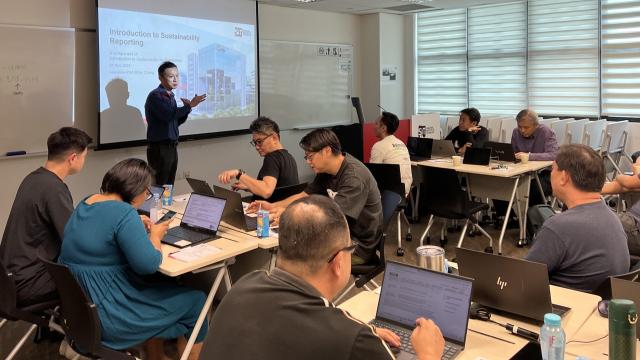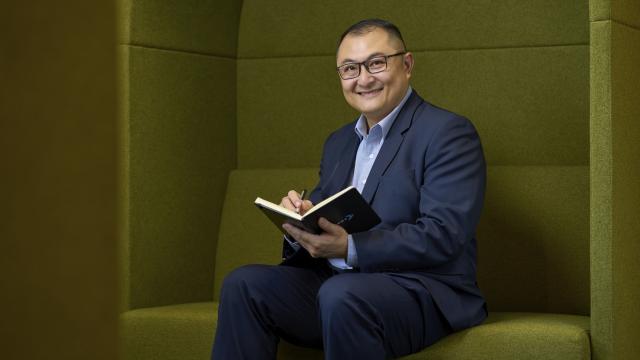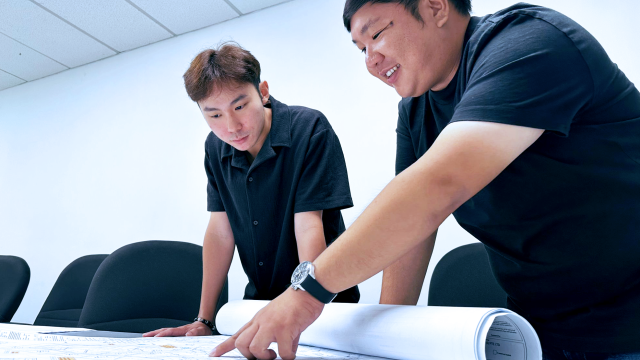Imagine being involved in building an Automated Guided Vehicle (AGV) from scratch. That’s exactly what Jonas Chandra, a Systems Engineering (ElectroMechanical Systems) (SEEMS) undergraduate, is passionately working on.
Like most of his peers, 25-year-old Jonas Chandra enjoys watching movies with friends. Unlike many of them however, the Singapore Institute of Technology (SIT) student also designs AGVs. This unique “cool project” landed up in Jonas’ hands as an assignment for his eight-month Integrated Work Study Programme (IWSP) with BAUMANN Springs, a leading manufacturer of springs and stampings.
The AGV — a first for BAUMANN’s operations in Singapore — will be able to transport material from one end of its processing line to the other when operational. “Automating this process will ease physical labour, and enable employees of BAUMANN Springs to focus on other more important tasks,” explains Jonas. “I’ve the opportunity to actually improve the company’s manufacturing process.”
If the project sounds like a complex undertaking, it’s because it is. Jonas has had to research on the technologies being used in the AGV industry today, brainstorm for solutions with two fellow SIT interns, submit a project proposal with his concept, design and approach, as well as draw up an estimated budget. Says Jonas: “I’ve started working on this since early this year, and the AGV is still only in its troubleshooting stage.”
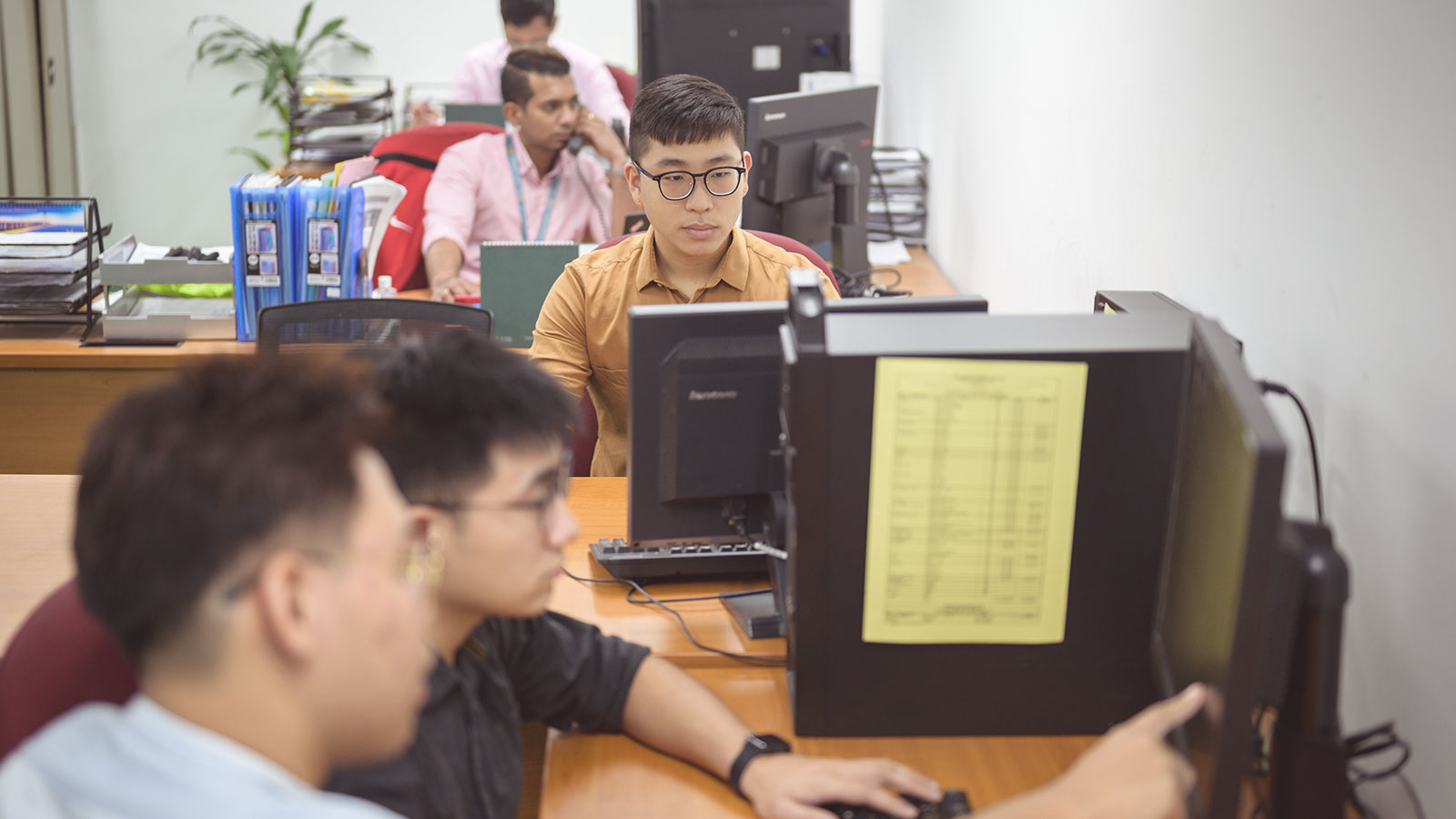 Jonas at his internship workspace at BAUMANN Springs
Jonas at his internship workspace at BAUMANN Springs
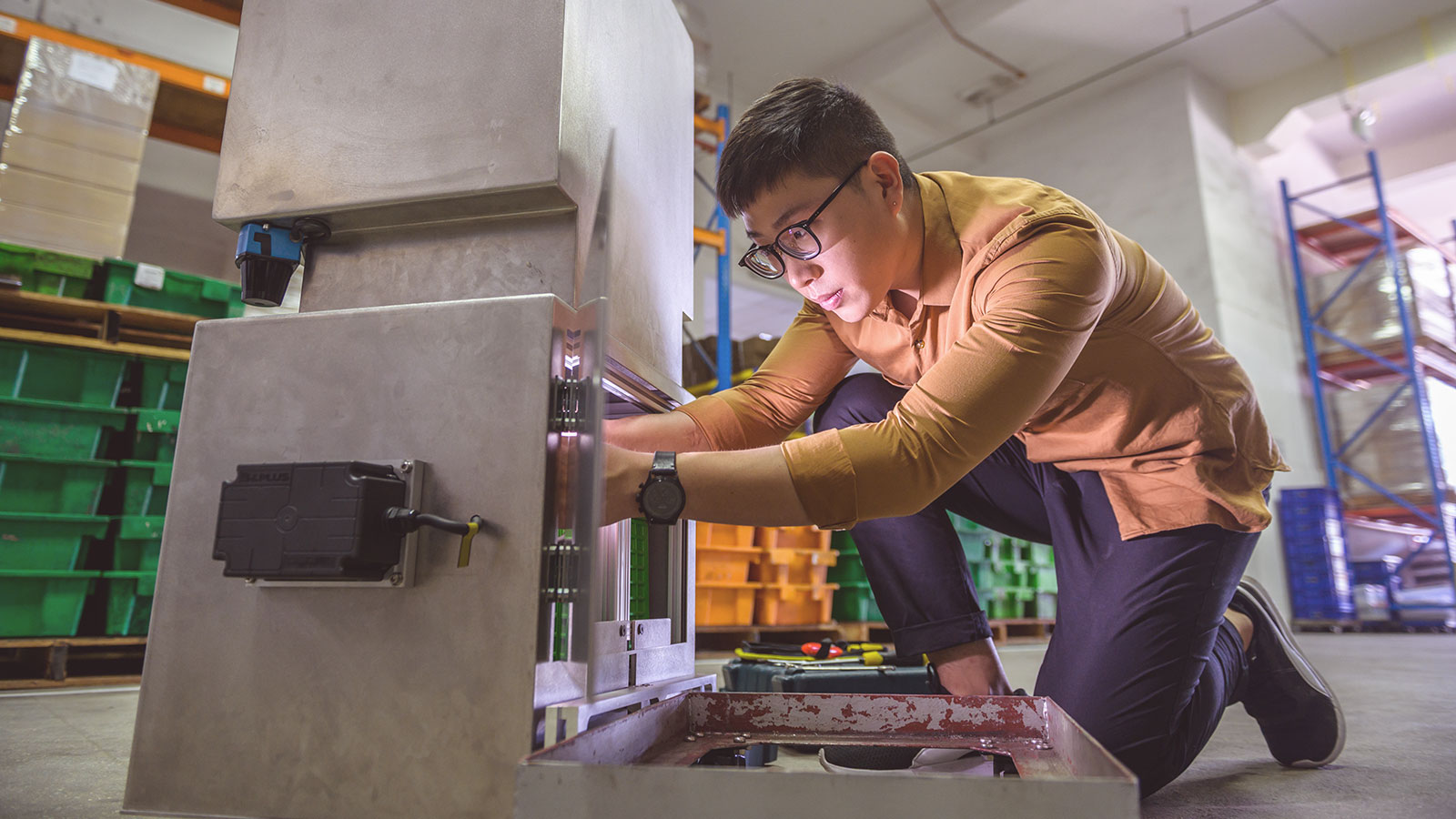 Planning the path which the AGV will take when operational
Planning the path which the AGV will take when operational
 Assembling with components Jonas selected independently
Assembling with components Jonas selected independently
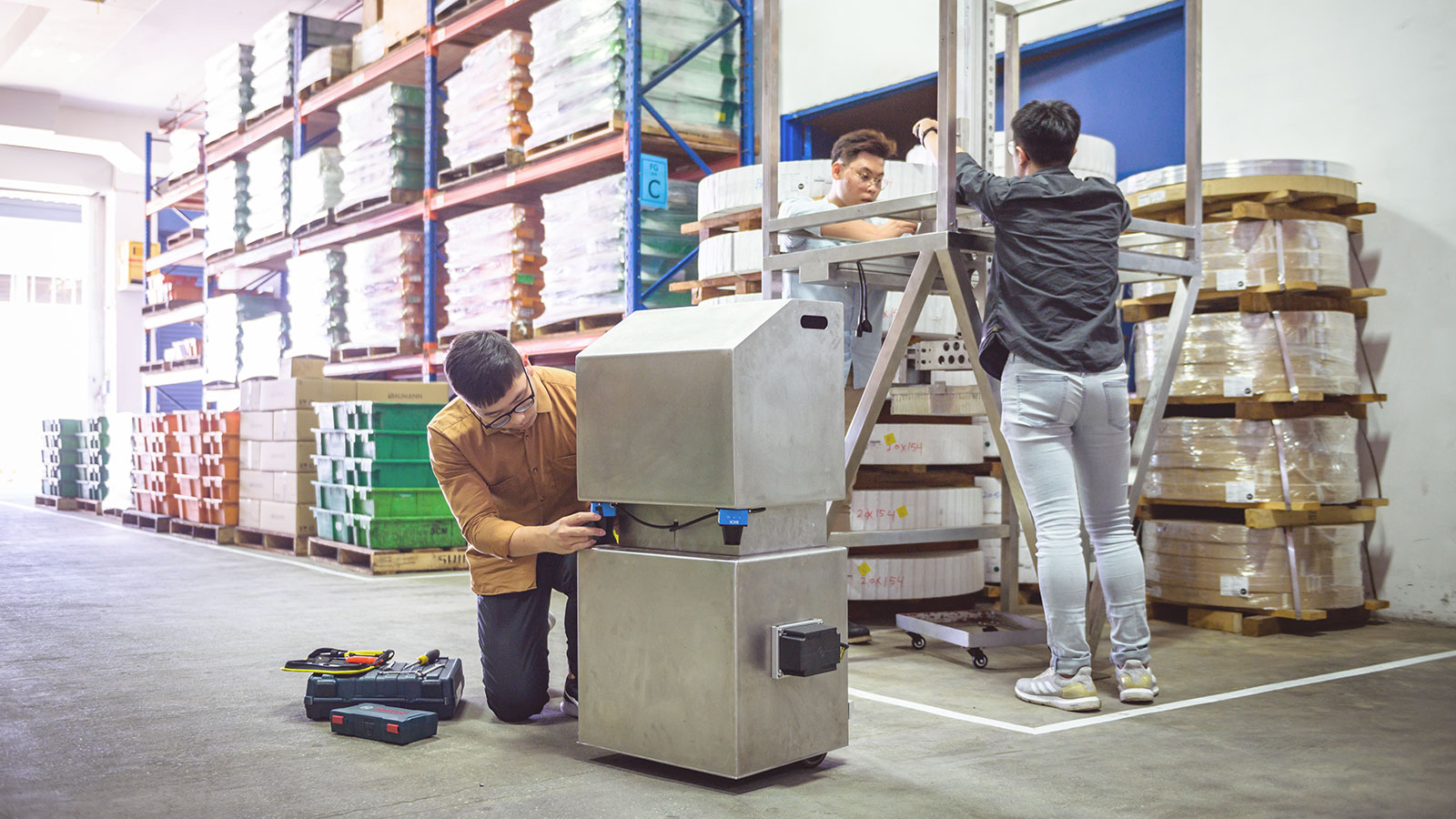 Fine-tuning the AGV with other interns also from SIT
Fine-tuning the AGV with other interns also from SIT
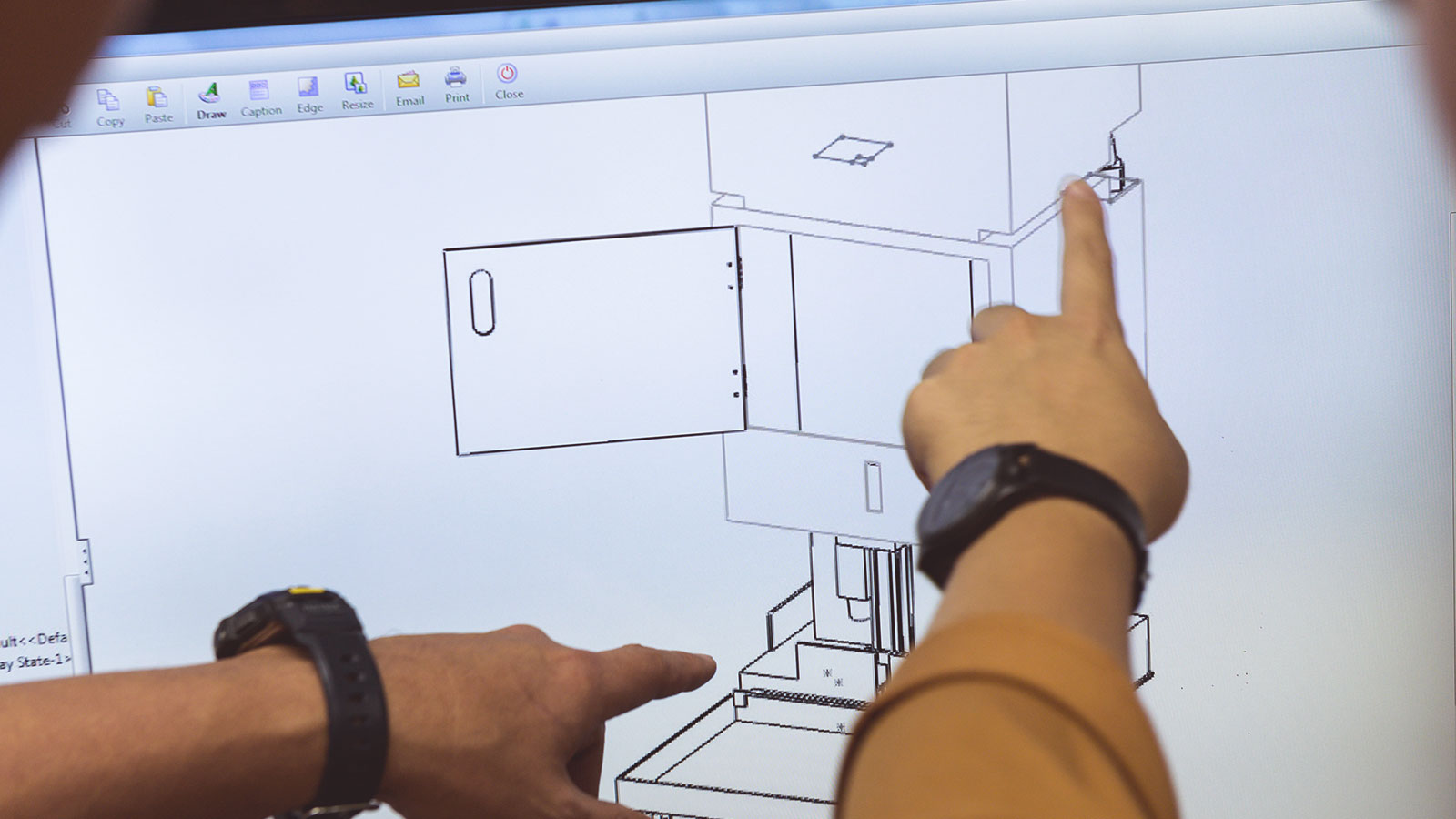 Conceptualising and designing the AGV from scratch
Conceptualising and designing the AGV from scratch
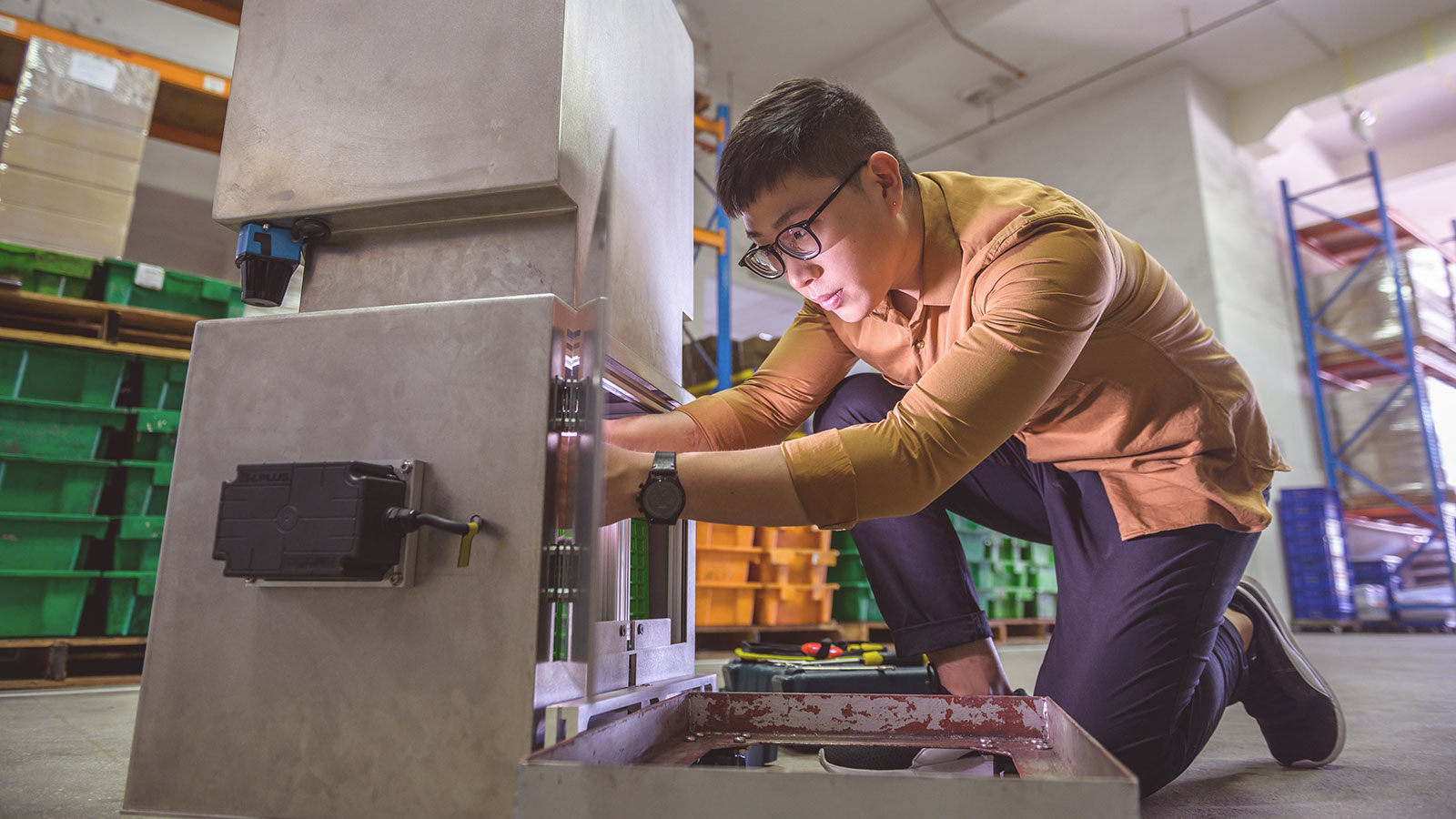 The project is complex; the AGV is still in its troubleshooting stage
The project is complex; the AGV is still in its troubleshooting stage
LEARNING HOW TO LEARN
The task may be demanding, but Jonas welcomes being entrusted with the level of ownership he has been empowered with. He was involved in the project right from the get-go, even selecting the basic components and parts. “Selecting suitable components and parts for the project requires careful calculations and forward-planning,” says Jonas. “When everything fit into place as I was assembling the AGV, I felt a sense of achievement.”
The biggest challenge for Jonas so far was having to quickly master a new programming language for a specialised computer used in industrial automation. While he had been briefly introduced to the Programmable Logic Controller (PLC) in his undergraduate course, this was the first time he was required to apply the knowledge in a real-world context.
Fortunately for Jonas, being a SEEMS student at SIT has equipped him with the requisite engineering concepts and trained him in picking up new skills effectively by “learning how to learn”.
Being able to expand his knowledge beyond a niche field was the key reason Jonas decided to pursue SEEMS — a multidisciplinary degree programme that combines the fields of mechanical, electrical, electronic, and computer engineering with a holistic approach to system development. The programme is a specialised degree offered by SIT, in partnership with DigiPen Institute of Technology (DigiPen), a dedicated, world-renowned leader in education and research in computer interactive technologies.
Jonas, who studied Mechanical Engineering at Ngee Ann Polytechnic, didn’t think focusing on one engineering field would be sufficient to meet the needs of a transforming economy. “I wanted to gain a holistic perspective of what engineering has to offer, pursue other aspects of engineering, such as electronics and yet have a specialised knowledge on how to design and manage complex systems.”
The choice has proven to be the right one for Jonas. “It feels good to be able to apply the knowledge gained from my degree programme into an actual real-world scenario, reassuring me that the content taught in school is relevant to the industry,” he says.
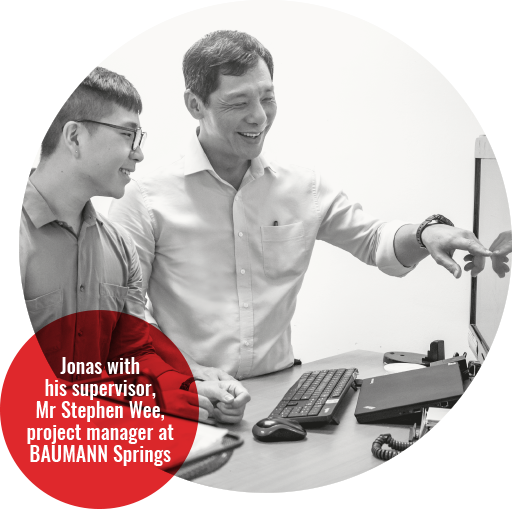 “As an engineer, new or old, the learning never stops.”
“As an engineer, new or old, the learning never stops.”
A WIN-WIN PARTNERSHIP
For BAUMANN, the partnership with SIT and its students is a win-win. The AGV project had been identified as a core organisational need, and project manager Mr Stephen Wee made this a priority project for the partnership. “This is so that students with suitable knowledge and passion will be more likely to apply and benefit from working on the project,” explains Mr Wee.
Students who graduate with such cutting-edge industry experience often have an advantage when entering the job market. In fact, he adds, they are often the preferred hires for BAUMANN.
And when hired, employees — new or experienced — need to continue to learn and relearn in order to stay relevant. Mr Wee stresses: “We are all expected to stay at least slightly ahead of the learning curve so that when that change is required, we are ready.”
In addition to adding to his resume, Jonas’s IWSP experience has also made clear to him the real-world demand for constant learning on the job and made him more prepared for the work force. “I won’t be too overwhelmed when I eventually embark on my career,” he says. “As an engineer, new or old, the learning never stops.”
This article was adapted from Channel NewsAsia with the permission of MediaCorp BrandStudio.

